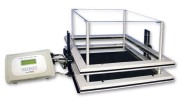Authors
J. Jeanblanc, K. Balguerie, F. Coune, R. Legastelois, V. Jeanblanc et al.
Lab
Université de Picardie Jules Verne, Amiens, France
Journal
Addiction Biology
Abstract
Schizophrenia is a mental disorder characterized by a series of positive, negative or cognitive symptoms but with also the particularity of exhibiting a high rate of co-morbid use of drugs of abuse. While more than 80% of schizophrenics are smokers, the second most consumed drug is alcohol, with dramatic consequences on frequency and intensity of psychotic episodes and on life expectancy. Here we investigated the impact of light alcohol intake during adolescence on the subsequent occurrence of alcohol addiction-like behavior in neonatal ventral hippocampal lesion (NVHL) rats, a neurodevelopmental model of schizophrenia. Our findings demonstrated an increased liability to addictive behaviors in adult NVHL rats after voluntary alcohol intake during adolescence. NVHL rats displayed several signs of alcohol use disorder such as a loss of control over alcohol intake and high motivation to consume alcohol, associated with a higher resistance to extinction. In addition, once NVHL rats relapsed, they maintained higher drinking levels than controls. We finally showed that the anti-addictive drug naltrexone is efficient in reducing excessive alcohol intake in NVHL rats. Our results are in accordance with epidemiological studies underlying the particular vulnerability to alcohol addiction after adolescent exposure to alcohol and highlight the fact that schizophrenic subjects may be particularly at risk even after light alcohol consumption. Based on these results, it seems particularly relevant to prevent early onset of alcohol use in at-risk subjects and thus to reduce the incidence of co-morbid alcohol abuse in psychotic patients.
BIOSEB Instruments Used:
Infrared Actimeter (LE8815)

 Pain - Thermal Allodynia / Hyperalgesia
Pain - Thermal Allodynia / Hyperalgesia Pain - Spontaneous Pain - Postural Deficit
Pain - Spontaneous Pain - Postural Deficit Pain - Mechanical Allodynia / Hyperalgesia
Pain - Mechanical Allodynia / Hyperalgesia Learning/Memory - Attention - Addiction
Learning/Memory - Attention - Addiction Physiology & Respiratory Research
Physiology & Respiratory Research
 Pain
Pain Central Nervous System (CNS)
Central Nervous System (CNS) Neurodegeneration
Neurodegeneration Sensory system
Sensory system Motor control
Motor control Mood Disorders
Mood Disorders Other disorders
Other disorders Muscular system
Muscular system Joints
Joints Metabolism
Metabolism Cross-disciplinary subjects
Cross-disciplinary subjects Preclinical studies and opioids: role in crisis management in the United States
Preclinical studies and opioids: role in crisis management in the United States 